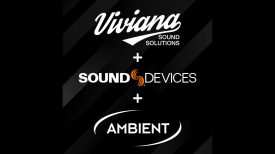
If you are a VJ or vlogger there is probably a pretty good chance that you are going to be using a smartphone at times to capture video. The Shoulderpod X1 Pro rig aims to make that just a little easier.
Smartphones: Good video, not great video
Smartphones such as the iPhone 7+ are capable of capturing pretty decent video in the right conditions. One of the problems when capturing video with a smartphone is that they haven’t been designed to attach accessories such as microphones or small lights. They also don’t have any mounting points so you can’t put them directly on a tripod or light stand.
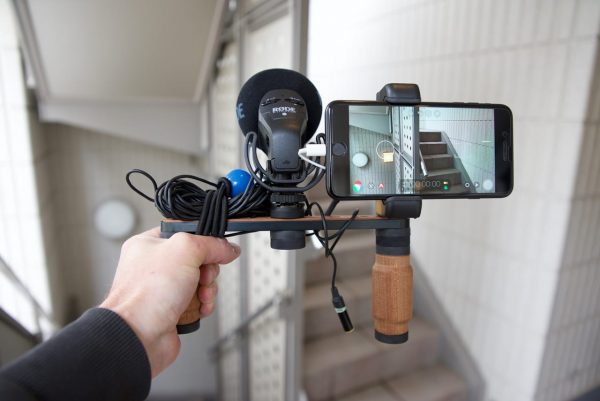
There are lots of third party solutions from a range of manufacturers on the market that are designed to make the whole shooting on a smartphone experience a little easier. One of these companies is Shoulderpod, who make a range of rigs that go from the simple G1 Grip that can be attached straight onto a tripod plate, up to the X1 Pro Rig that is meant for attaching multiple accessories.
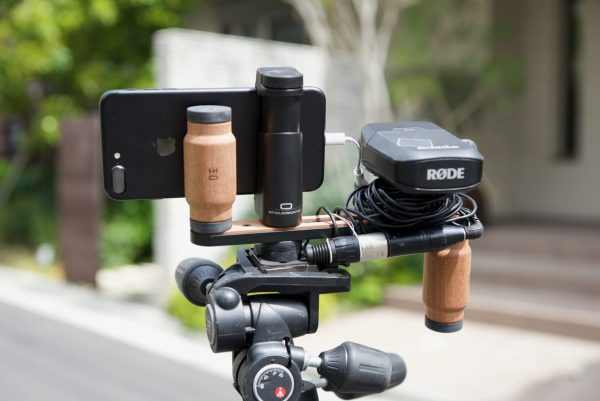
The Shoulderpod X1 Pro Rig
The Shoulderpod X1 Pro Rig is a modular system that lets you attach your phone, microphone, light or any other accessory that you may need. The rig is made out of aluminium, high grade polymers, and Sapell wood, and can easily and quickly be configured for handheld or tripod use. The X1 Pro Rig lets you combine different parts to create a rig that most suits your application. Shoulderpod currently offer seven different parts, and they will be launching more shortly.
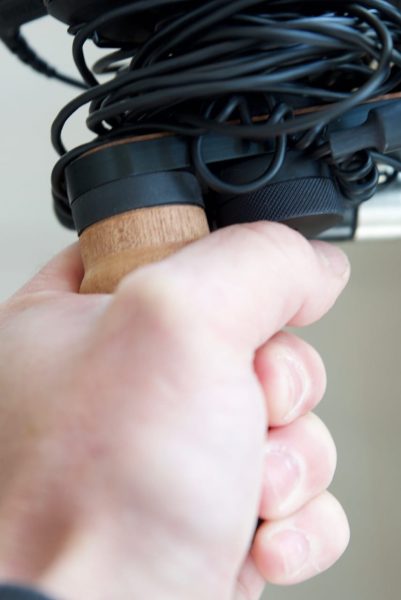
Shoulderpod X1 Pro: Build quality
I found the build quality of the rig to be pretty good. Everything locks down nicely and the simple but functional design means it isn’t too fiddly or complex to use. The wooden handles are quite nice to hold, but I did find them to be just a little short, especially when you have accessories attached out on the edges of the frame.
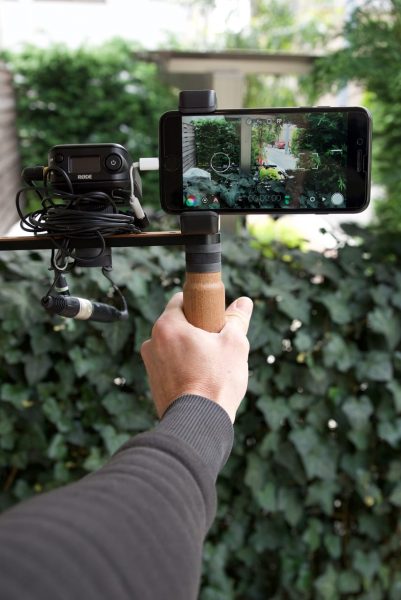
The cradle mount that holds your smartphone is nicely made and very secure. One of the nicest things about the X1 Pro Rig is you can move all the parts around to create a rig that works for you. The flexibility of having a system that allows you to take all the individual parts and even use them with other products is something I really liked.
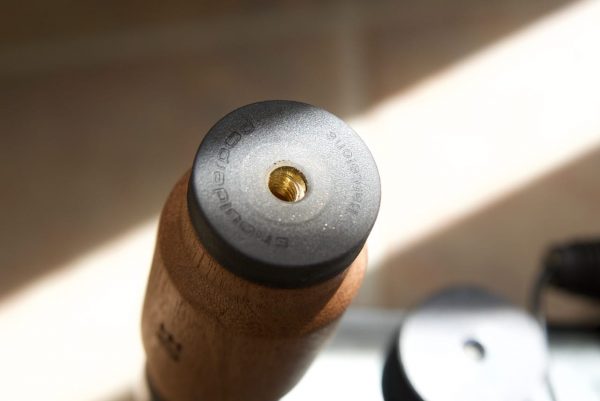
Modular, compatible accessories
On the bottom of all the accessory mounting knobs, handles, and phone cradle is a 1/4″ 20 thread which is really handy if you want to attach additional accessories or mount the rig directly onto a magic arm etc. You’re also able to put a small tripod base plate directly on the rig so you can go from a tripod to handheld operation very quickly.
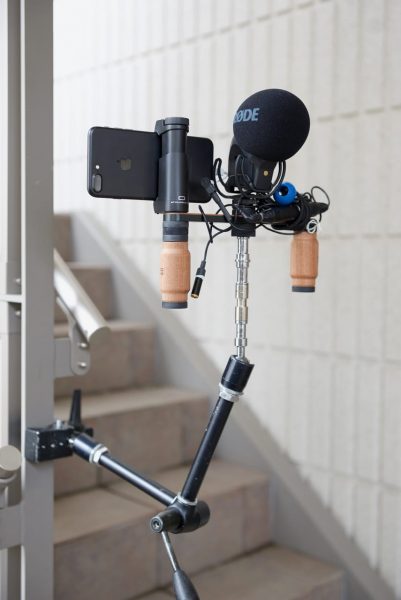
Report from the field
I have been road testing the X1 Pro rig with my iPhone 7+ to see if it actually does make the whole capturing video on a smartphone easier. I sometimes use my iPhone on a gimbal such as the DJI OSMO Mobile or Zhiyun Smooth Q, and while this is a good way of capturing video, you don’t have anyway of easily capturing decent audio unless you are willing to record your sound separately.
For me the only reason to use a third party rig for a smartphone is to allow it to be put on a tripod and to let you record proper professional audio. If you don’t need to capture proper audio then in my honest opinion there is no real big benefit to using a smartphone rig.
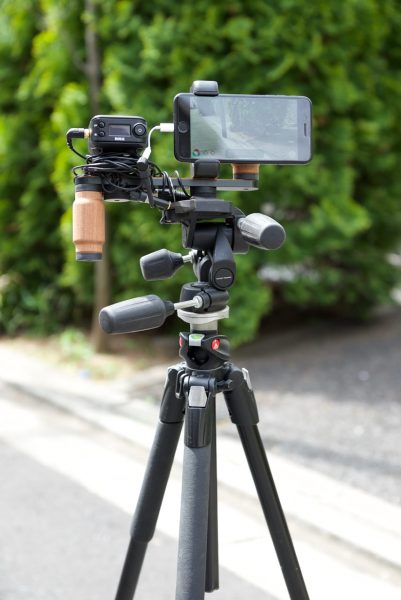
Shoulderpod X1 Pro: soundie in your pocket
To capture proper audio and video on a phone such as the iPhone 7+ you do need a little help. The removal of the headphone jack by Apple on the new iPhones does cause headaches for inputting a microphone source. You can’t just plug a microphone straight into your phone, and you need a third party cable that can accept a mic input (either XLR or a 3.5mm) and then send it to your phone. When I tried plugging a few Rode microphones straight into my iPhone 7+ (using the lightning to headphone jack adapter) I couldn’t get any of them to work.
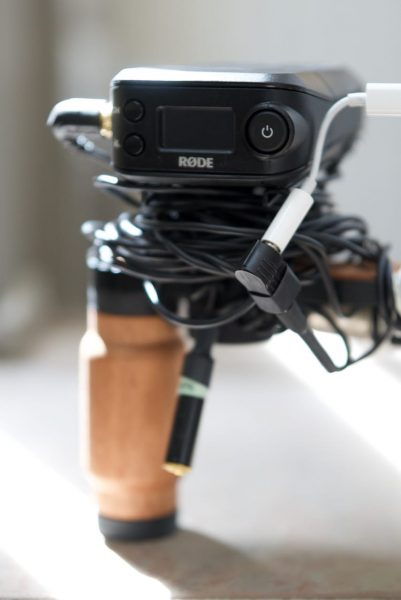
The thing to note when you are looking for a smartphone rig is that most of the promotional photos are not going to show you the product being used with equipment that requires cables. In reality a lot of audio accessories are going to require the use of cables, and you need to mount and put those cables somewhere. A smartphone rig may look clean and uncluttered, but in the real world that may not be how you use it.
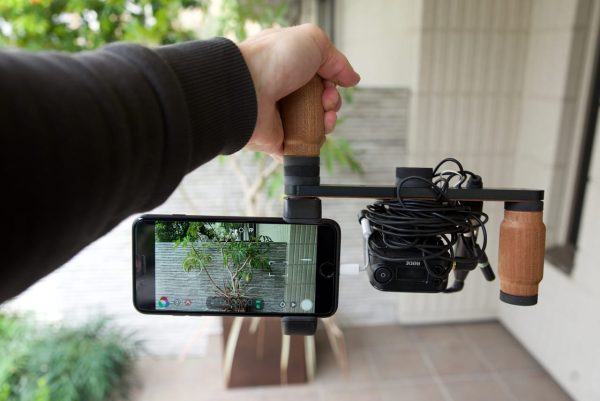
With the iPhone 7+ I had to use a third party splitter cable with my Rode mics or RodeLink Wireless. This cable needs to be used with the Apple lightning to headphone adapter and all these cables need to go somewhere. This is where you need to do a bit of DIY and come up with a solution of where you are going to mount your cables and keep them out of the way.
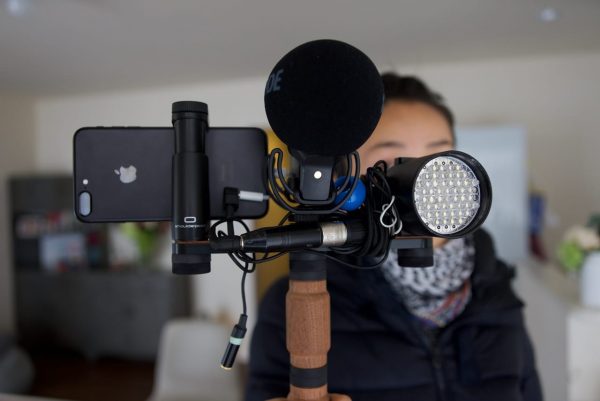
Why use a smartphone rig?
For me the whole purpose of using a iPhone to capture video is for the convenience factor. You can just pull your phone out of your pocket and start shooting anytime and anywhere. So does adding a rig defeat the purpose of why you would want to use a smartphone in the first place? This really depends on who you are and what you are using a smartphone for. If you are a VJ, vlogger, or even a professional cameraman who primarily uses proper video cameras, if you want to capture good audio then using a rig does make this a lot easier. If you don’t need to record any type of professional sound then using a third party rig may not be much of a benefit to you, and you are probably better off just carrying around something like the G1 Grip so you can use your smartphone on a tripod or other mount.
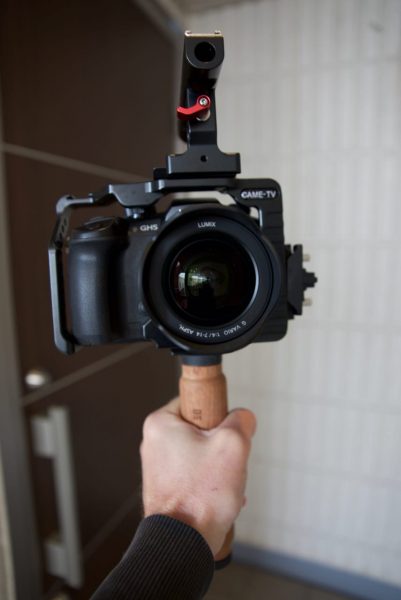
Shoulderpod X1 Pro: verdict, price and availability
I enjoyed using the X1 Pro Rig. It’s versatility in being able to make a range of different set up configurations with the included parts is its biggest strength. Even if you don’t use the rig with your smartphone you can take parts off it and use them on other cameras and pieces of equipment.
The X1 Pro Rig retails for $129 US which I think is fairly reasonable given the quality of the parts that are used. If you are a VJ, vlogger, or even a professional cameraman who may use a iPhone on the rare occasion, the X1 Pro Rig is a pretty good option. For more information go to the Shoulderpod website.




